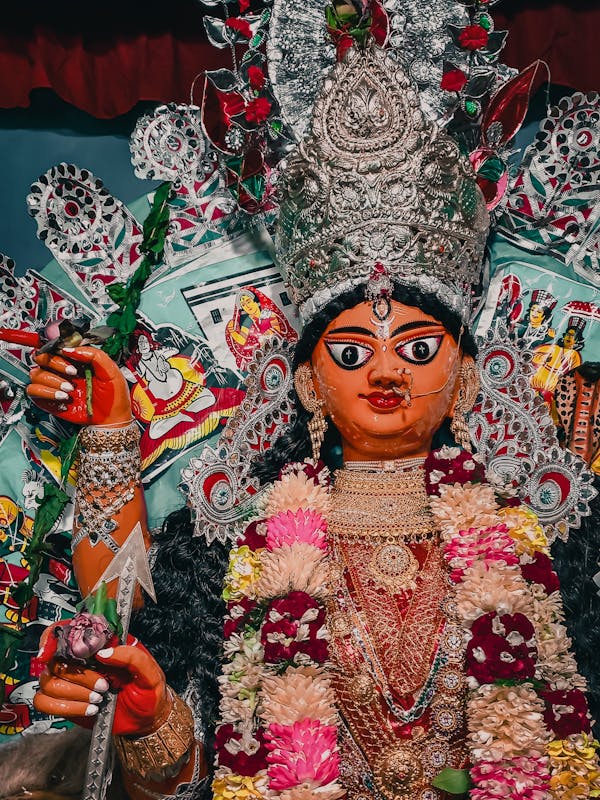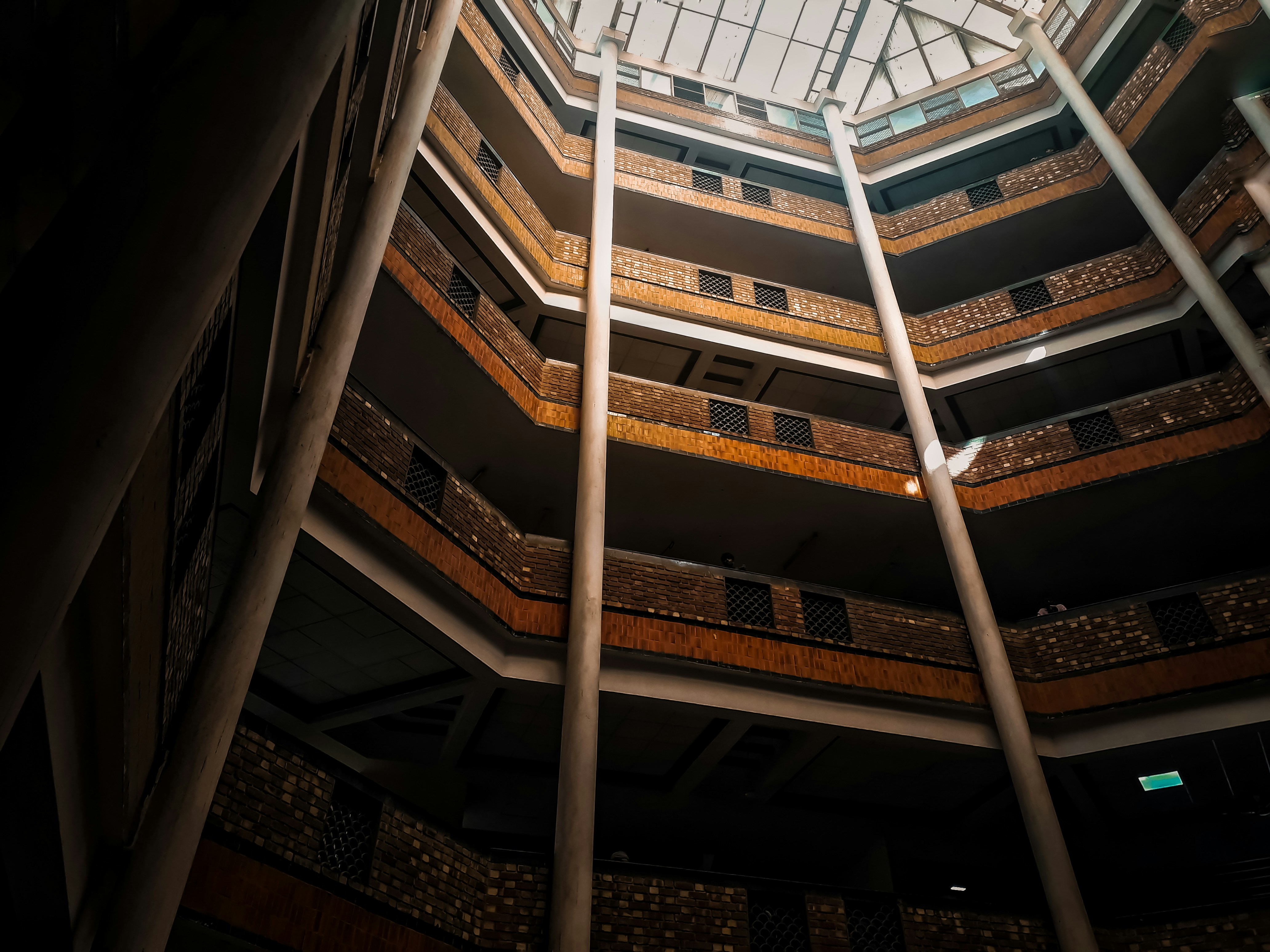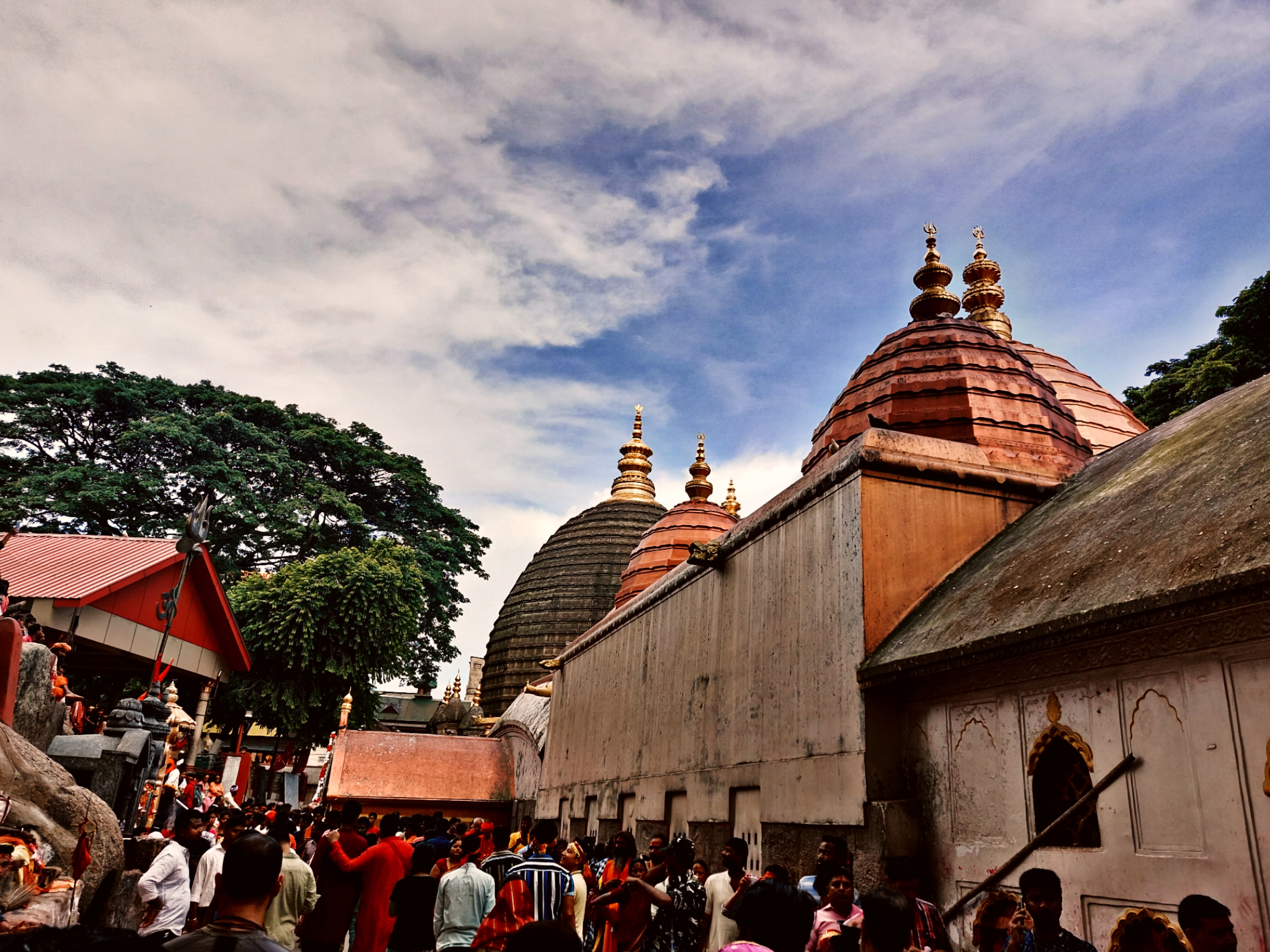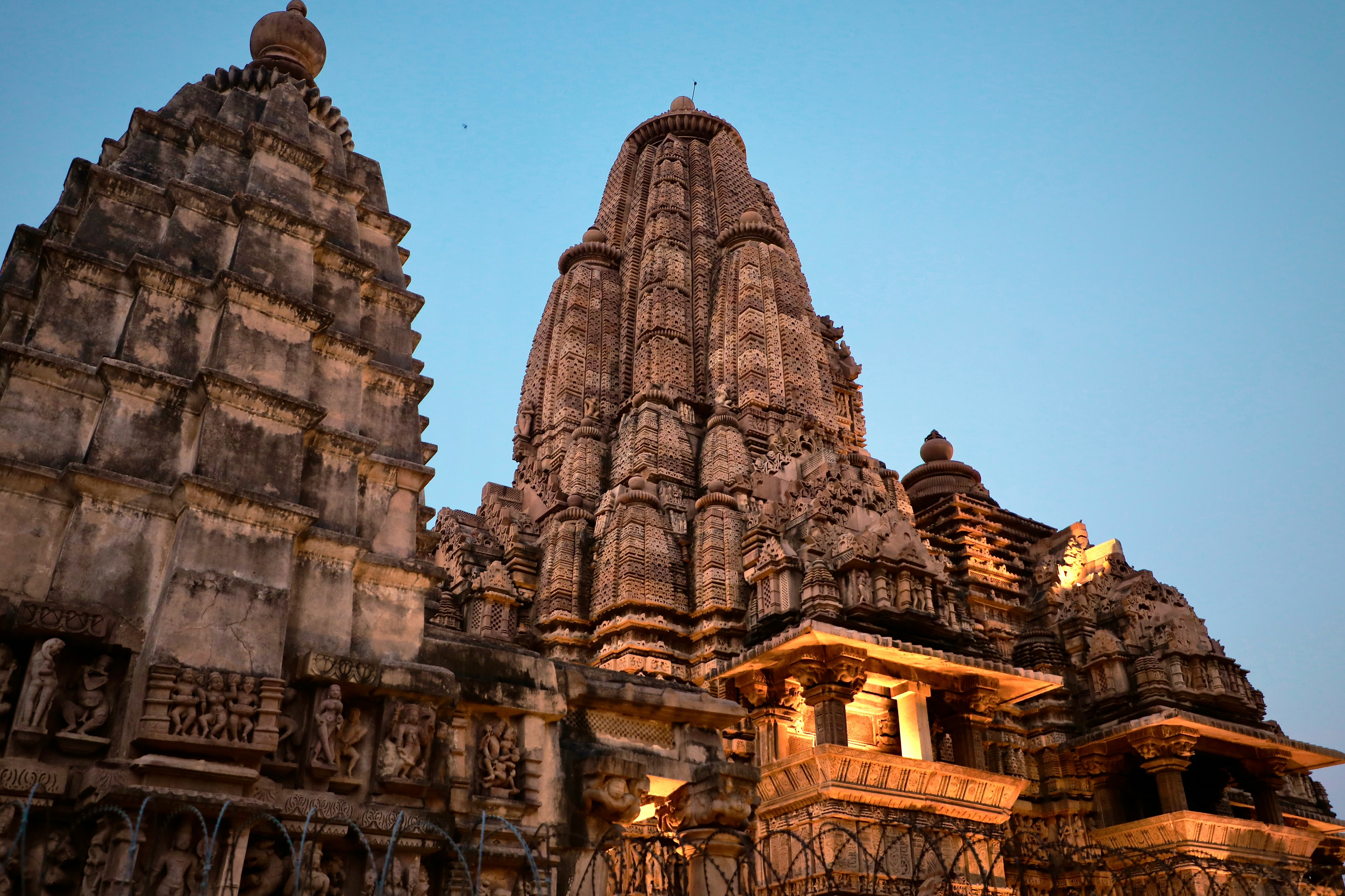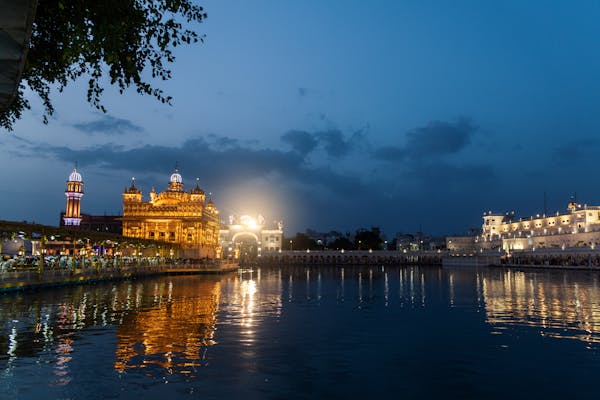The origins of the Shakti Peeths give a fascinating insight into the history, mythology, and spiritual relevance of these sites in Indian culture. For many pilgrims and curious explorers, India’s Shakti Peeths have been a spiritual journey worth experiencing. Let’s explore the significance of these holy sites of the divine feminine.
Origin of the Shakti Peeths
The story behind how the Shakti Peeths emerged traces back to the legend of Goddess Sati. It is said that King Daksha, Sati’s father, disapproved of Sati and Shiva’s marriage and didn’t invite them to his yajna (sacrificial fire). Despite Shiva’s efforts to dissuade her from attending, Sati insisted that they attend, only for Daksha to insult Shiva. Unable to bear Shiva’s dishonor, she cursed Daksha and self-immolated into the yajna.
Her self-sacrifice led to Shiva roaming across the cosmos holding her corpse. An enraged Shiva then started performing the Tandava, a cosmic dance of destruction. Fearful that Shiva would destroy the world, Lord Vishnu used his divine weapon, the Sudarshana Chakra, to cut Sati’s corpse into pieces. These body parts fell on Earth across different places and then became sanctified as the divine Shakti Peeths.
What is a Shakti Peeth?
The word ‘Shakti’ refers to the feminine energy worshiped in Hinduism. ‘Peeth’ or ‘Peetham’ is a Sanskrit word that, in this context, translates to ‘a seat’ or ‘pedestal’. The word then literally translates to ‘A seat of the divine feminine energy’. The Shakti Peeths are considered sacred in Hinduism as they act as sources of immense spiritual power.
Variations in the Shakti Peeths
Depending on the scriptures and puranas (holy texts) referred to, there can be multiple versions of the Shakti Peeths. Based on them, there are 3.5, 18, 51, and 64 such Peeths in India. There are 108 Shakti Peeths as well, some of which are also spread in Nepal, Pakistan, and Sri Lanka.
-
The Kalika Purana mentions that there are 4 Adi Shakti Peeths that represent the 4 parts of Goddess Sati’s corpse. These 4 Shakti Peeths are located in the states of Odisha (Vimala and Tara Tarini), West Bengal (Dakshina Kalika), and Assam (Kamakhya).
-
According to Adi Shankara's Ashtadasha Shakta Pitha Stotram, there are 18 ‘Maha’ (great) Shakti Peeths. The ones at Ujjain (Mahakali), Gaya (Sarvamangala), and Assam (Kamakhya) are the most prominent among them.
-
The state of Maharashtra also has its own version - called the 3.5 Shakti Peeths. These Peeths are situated in Tuljapur (Tulja Bhavani), Kolhapur (Mahalakshmi or Ambabai), Mahur (Renuka), and Vani (Saptashrungi).
Significance of the Shakti Peeths
Spiritual Power
Hinduism believes that the right balance of the divine masculine and the divine feminine is essential to maintain the cosmic order. The Shakti Peeths house spiritual energy associated with this divine feminine or ‘Shakti’. Apart from being hailed for their religious significance, they are also centers of enlightenment and spiritual awakening for many.
Cultural Heritage
Beyond merely being seen as sites of worship, some of these temples have a longstanding history associated with the region they are in. For example, the Mahalakshmi Temple of Kolhapur has played a key role in Maharashtra’s medieval politics and served as an important worship site for the Maratha empire. Many temples like these are essential parts of the local folklore, history, and cultural heritage.
Worship of the Divine Feminine in Hinduism
Hinduism places immense emphasis on the worship of Shakti. These Shakti Peeths highlight how our religious practices equally worship the feminine and the masculine energies without placing one above the other. Many Hindu festivals like Navratri and Durga Puja celebrate feminine energy and the many forms of Shakti celebrate womanhood in its full glory.
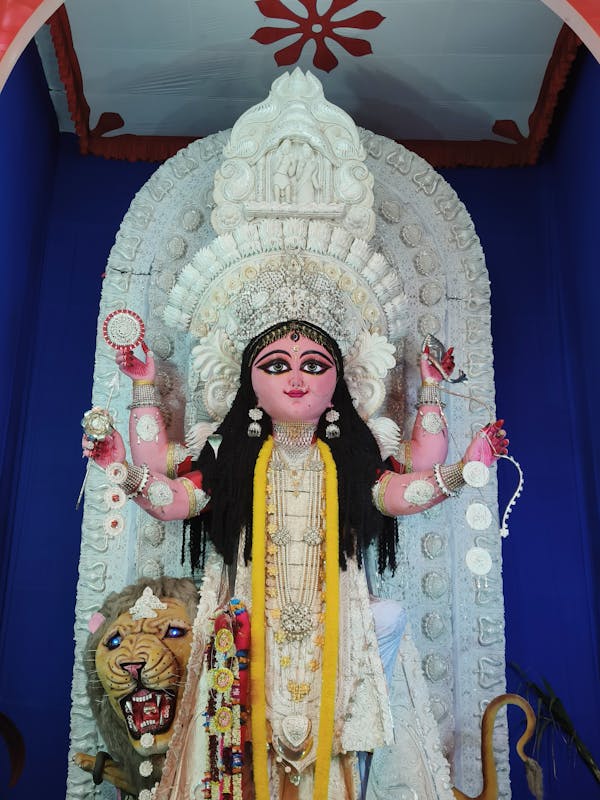
Common Rituals and Practices
Even though each Shakti Peeth might differ in the rituals and practices it follows, there are a few that are largely common. Pilgrims often pray to fulfill their vows, desires, and prayers.
-
Puja: Usually performed by offering flowers, fruits, and sweets to the deity.
-
Parikrama: It involves circumambulating around the sanctum as a common act of reverence.
-
Fasting: On certain days and occasions, pilgrims observe a fast as a form of spiritual discipline.
-
Aarti: A daily ceremony where lamps are wavered in front of the deity in a clockwise direction. During this, prayers and songs associated with the deity are also sung.
-
Mantra: Pilgrims chant hymns and mantras, often specific to the deity, to invoke divine energy.
Summing Up
The Shakti Peeths hold a deep spiritual and cultural significance in India, rooted in the legend of Goddess Sati and symbolizing the divine feminine energy. These holy sites are not only centers of worship but also places of cultural heritage. Exploring them offers a profound connection to history, mythology, and the worship of Shakti in all her forms. If you plan to explore the divine energy of the Shakti Peeths, contact us for a luxurious experience!
FAQs
What Does Shakti Represent In Hinduism?
Shakti in Hinduism represents power, energy, or force. Mythologically, Shakti is always described as feminine, often personified as the Goddess Devi who has different incarnations.
Who Is More Powerful, Shiva Or Shakti?
Hinduism believes that neither Shiva nor Shakti are more powerful than their counterparts. They’re seen as equally powerful energies.
Where Are All The 51 Shakti Peeths Located?
While there are 7 in Bangladesh, 4 in Nepal, 3 in Pakistan, and one each in Tibet, Sri Lanka, and Bhutan, the majority of these Shakti Peeths are located in India.

